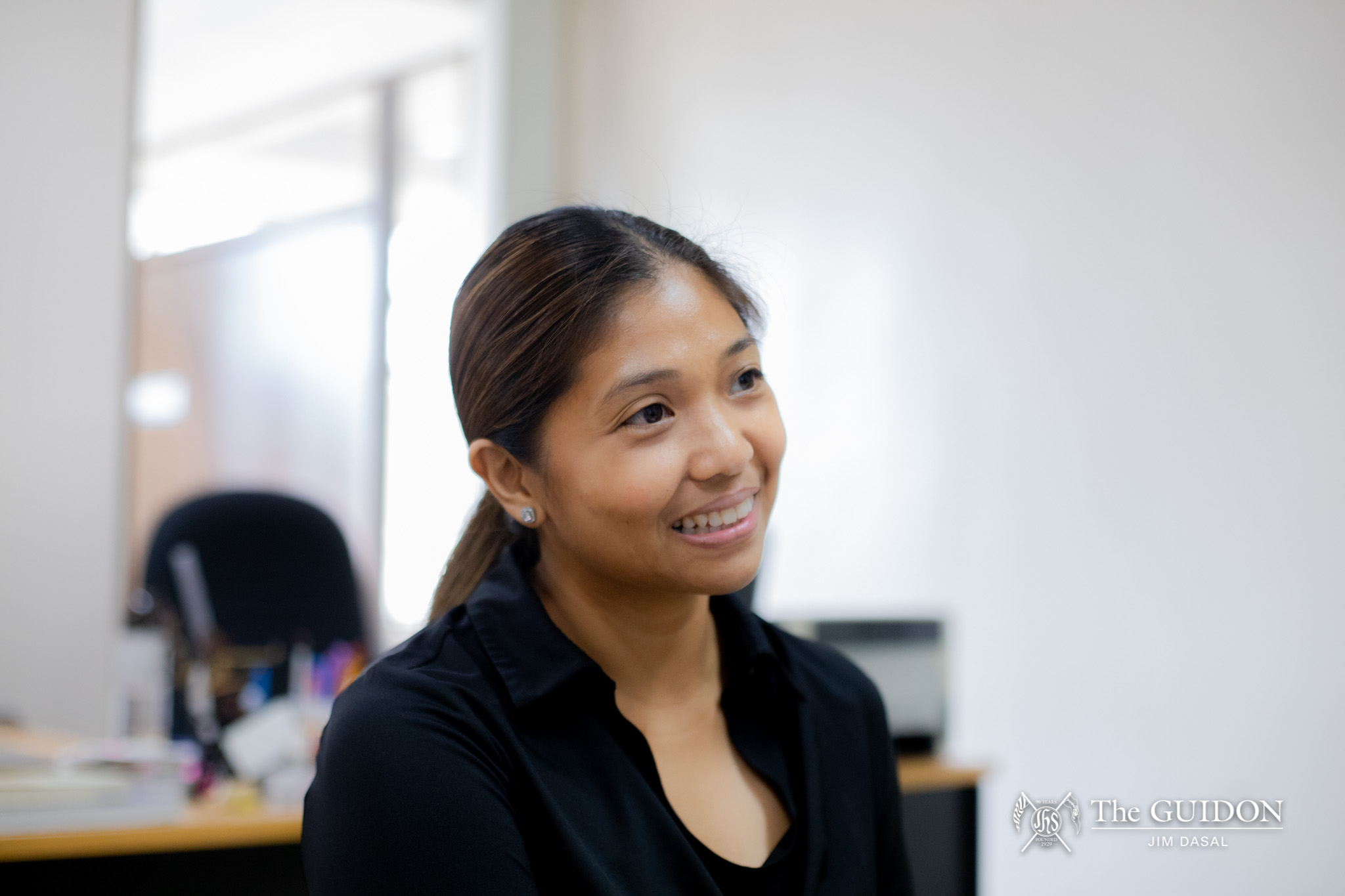
Photo by Jim Dasal
Clarissa Mijares-Ramos, MA (Department of Sociology and Anthropology) remains ever prepared for her next performance with her background in classical ballet and contemporary dance. Thanks to a personal research interest in music ethnography and dance awareness, she translates her teachings into a form beyond words. She is a former member of Airdance Manila and continues to promote the craft until now. Her passion shines in the classroom as she teaches students dance to better understand the history behind the performance.
More than anything, I like sharing the joy of dance with people. It’s such a marginalized art form and it’s usually thought to be a thoughtless act—a mindless contribution to society. I feel like if I share what goes behind it as well, apart from the dance itself, then people might gain an interest in the functions of dance, the roles of dance—in performance play and in society.
Naiinis talaga ako sa mga taong ‘yung sinasabing “eh, sayaw-sayaw lang yan.” Ngayon wala na akong energy for that [engaging detractors]. Hindi ko responsibility na i-enlighten silang lahat.
(I get frustrated by people who say “It’s just dancing.” Now, I don’t have the energy for that. It’s not my responsibility to enlighten everyone.)
I will enlighten whom I can. I think our consumption of art, much of it is based on our exposure and how our parents have exposed us to these cultural endeavors. Doon mo makikita na ang daming taong mayaman pero (That is where I see a lot of people who are wealthy but), they don’t bother educating their children on how to participate in these cultural events and how to consume cultural material.
The experience should be lived, so I ask people to dance. I perform and would ask for them [my students] to also do a dance. I would teach them basic steps and I would really thaw it down so that it’s palatable even for the most non-dancer-ish. That’s my claim to fame: That I can make anyone dance.
For example, in SA 21 [Introduction to Sociology and Anthropology], students would always remember the ballet class, and I use ballet class to teach gender in the feminization of ballet. Ballet actually started as a male dominated dance form because it was heavily promoted by King Louis XIV. Dati nag-aaral ng classical ballet ang mga lalaki lang (In the past, only men studied classical ballet). [The] Royal Academy of Dance in the United Kingdom only accepted male dancers until such time where, during the romantic era, there was one choreographer who did not have a son, but had a daughter. And it was only then when dancers went on pointe and [ballet] became a female art.
[For] folk dances, you don’t have to go and enroll yourself in a school to perform it, and I think that’s what’s lost when everything is too performative. You know how people think “Oh, [para sa] dancers lang ‘yan dapat (Oh, that should only be for dancers),“ but then our traditional dances were not meant to be that way. They were meant to be community activities.
I think kulang pa tayo sa (I think we still lack this sense of) “I am a Filipino Atenean.” Parang siguro kailangan pang mas i-articulate (maybe we need to further articulate) “how am I Filipino? In what way am I Filipino?” and I think the University could do a lot more in encouraging that kind of identity formation.
Now that we have the Areté, which stands for culture, innovation, and identity, perhaps we have a greater chance at it [nationalist formation]. So, sana talaga, kasi sayang. Ang dami nating (So, hopefully, because that would be a waste of the many) spaces and resources available to us. We do our part, whatever little we can contribute.